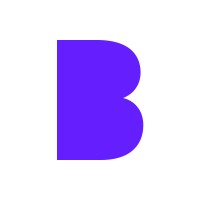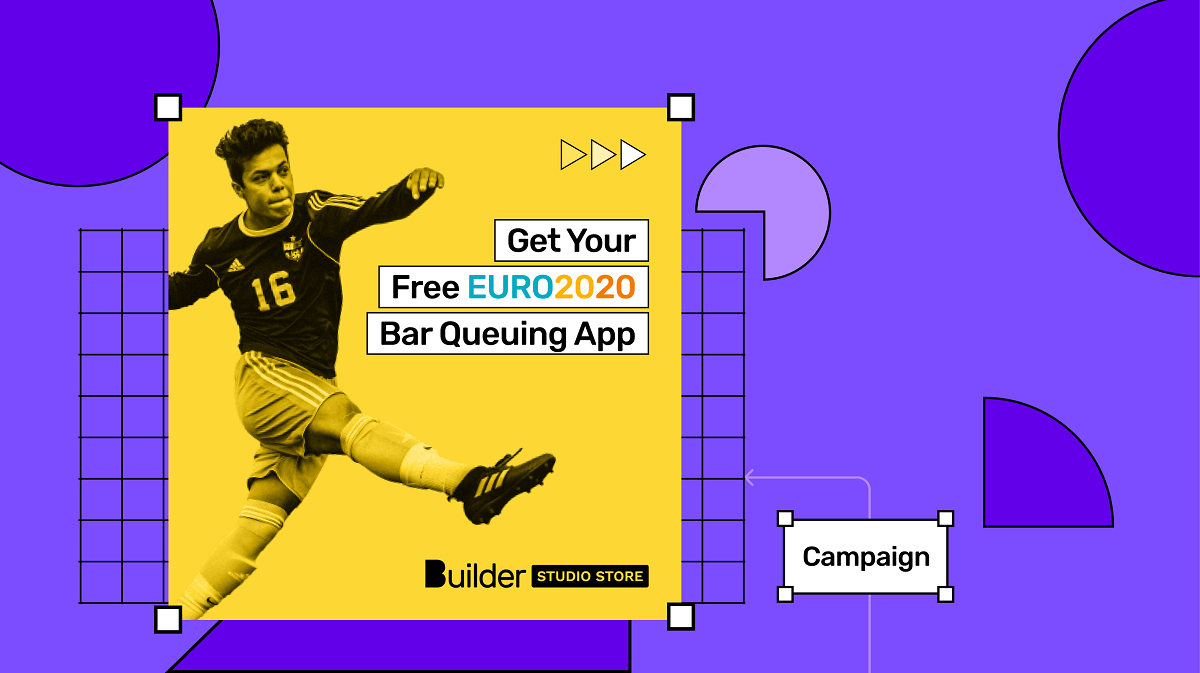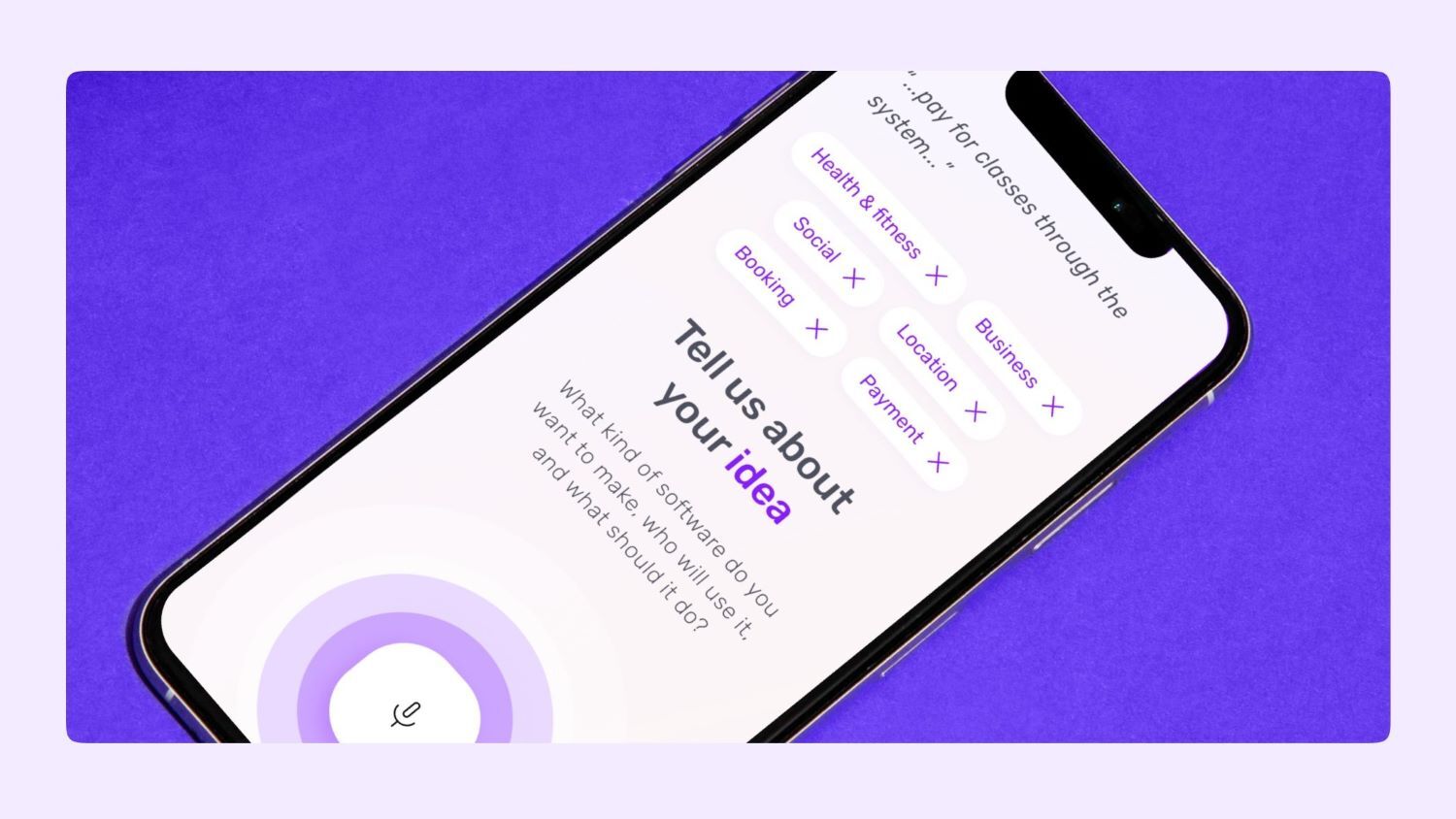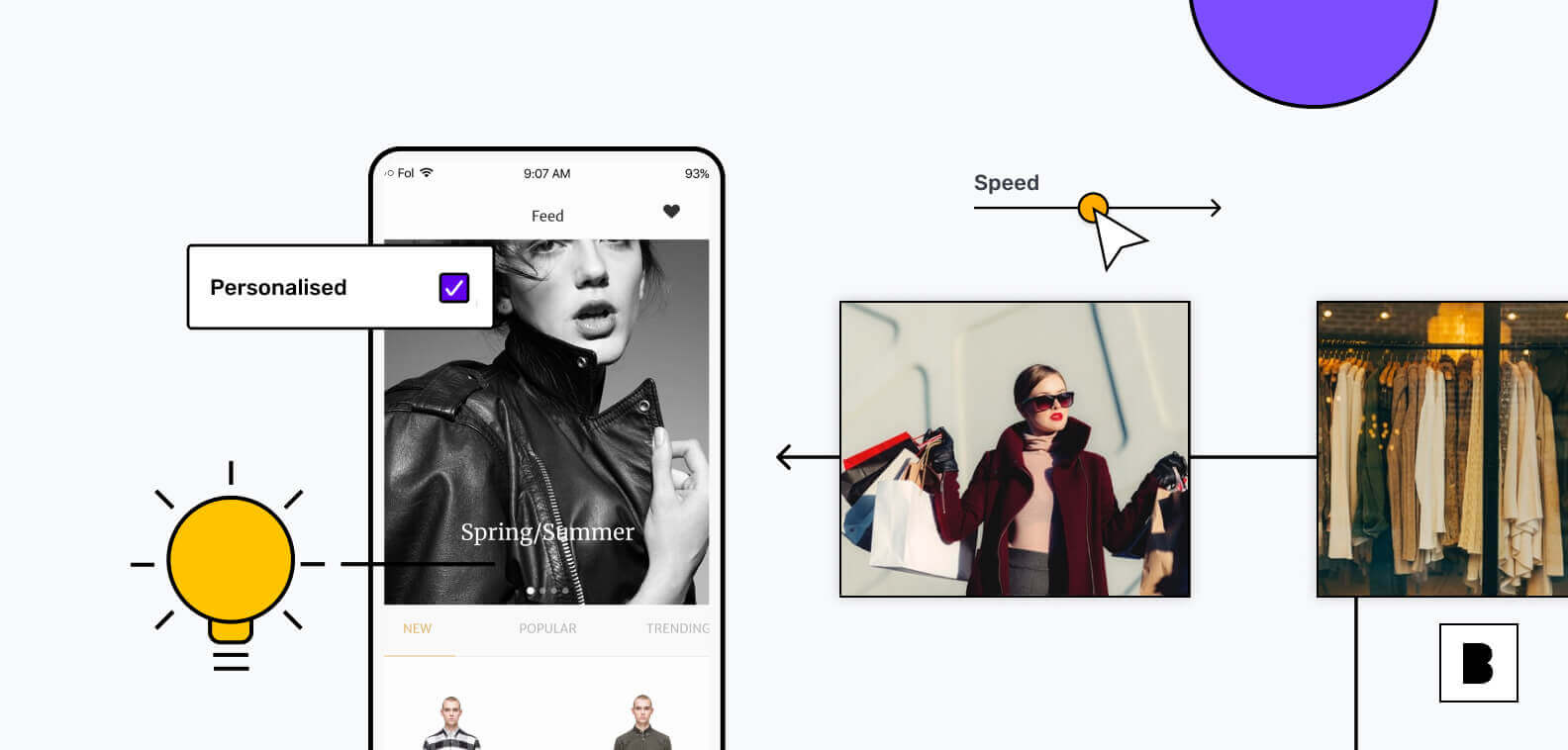Why use web advertising?
There are 2 main ways online advertising can help grow your business:
- Brand awareness –get your brand in front of more people and you’re setting yourself up as the go-to solution. Think about how Google has become synonymous with search engine. Google has even become a verb! This level of brand awareness has done wonders for them as a business. Statista found that Google had a market share of 86.6%, whereas Bing only had 6.7%.
- Make more sales – targeted advertising is a great way to get your product in front of people wanting to buy. You’re not only limited to people who know about your business. It’s possible to use targeting techniques to break into new audiences.
The basics of online advertising
There are almost unlimited advertising methods available and they all use the same key principles. Learn these basics and you can use any platform.
Best online advertising channels
This is very business dependent. Advertising expensive SAAS products? Snapchat or TikTok is probably not going to get the results you hope. Why? The demographics of those platforms are heavily skewed towards a younger audience. You’d be better served by targeting LinkedIn as the users are more likely to be business professionals interested in your product.
Most businesses would do well to allocate their budget across a few advertising channels. This lets them reap the rewards of proven solutions, while still having room to experiment with other ideas. As time goes on you can vary your breakdown to lean into the most profitable channels. However, when you find something that works well, don’t stop experimenting.
Which social channel?
We’d suggest most businesses start with either LinkedIn or Facebook. Both platforms are great and have unique features. As a general rule, B2B will do slightly better on LinkedIn. Whereas, B2C will do better on Facebook.
This is just a guide. You might have the opposite experience, it’s heavily dependent on your niche. The only way to know for sure is to experiment with both.
TIP: Don’t put all your eggs in one basket
The algorithms that run the auctions change, customer behaviour changes and platforms can close. Make sure you always have a backup option you can quickly scale up.
Local business advertising
The above channels are all viable options, but there are a few ideas that only work for businesses advertising locally. If you only do one extra thing for your business, we’d recommend Google My Business. This lets you appear in Google’s business directory – a selection of these results will appear at the top of the SERP. You’ll also show up in Google Maps.
This is a great way to boost the visibility of your business in local search and it’s 100% free. It’s in Google’s best interest to provide the most useful results to their users. It’s quick to set up; just confirm ownership of your business and add a few details about your business. To increase your ranking in the listings: share as much information as possible – such as phone numbers and opening hours, regularly add business updates and request customers reviews.
TIP: There are lots of online business directories
Bing Places is a big one. It’s a good idea to search for ‘your industry + local area’ directories. You’ll find many that accept free listings.
Another method of local advertising is to sponsor a local event. Not only will your brand get mentioned at the event, but you’ll also be discussed on the event social networks. For larger events, there’s also a chance you’ll receive some coverage from a local paper. These are great ways to generate awareness amongst local customers and teach search engines you’re a high-quality local business.
Keywords
Your ads will be shown to different people based on the keywords that you target. Choosing the correct keyword is the difference between a successful ad or one that flops.
Some business relevant keywords will be obvious, others might need more research to identify. You pay to have your business appear when people are searching for certain keywords. Over time you’ll find which keywords are driving the traffic that converts for your business.
There are 2 types of keywords you need to know about:
- Short-tail keywords – these are very broad and cover a range of topics. E.g. Animals, shoes, people, etc...
- Long-tail keywords – these are much more specific and will hone in one idea specifically. E.g. Koala bears feeding habits, best trail running shoes 2021, Jason Momoa films, etc...
As a general rule, you’re probably better to target long-tail keywords relevant to your business. As they’re hyper-focused, the chance of them being relevant to your audience is increased. This means the people that see your ad are more likely to convert. Additionally, there’s less competition on long-tail keywords. This means you can win the spot at less cost.
TIP: Protect your brand name
Add your brand name as a keyword you’re targeting. This prevents competitors from showing their ads to prospective customers researching your business.
Choosing the right bidding strategy

What do we mean by win the spot? Ad platforms use an auction-style system to decide who gets which ad slot. Everyone who wants their ad to be considered for a particular keyword enters the max bid they’re willing to pay.
It’s not limited to just money though. Each ad is given a quality score. This is a rating that aims to show how well the ad, landing page and keyword work together. The most relevant ads will have a higher quality score. Search engine providers don’t want to reward deceptive advertising as it’ll make end-users view their platform negatively.
However, they’re not averse to money. So they created a system that balances the 2. The overall rating is a combination of the quality score and the max bid. This system allows relevant bids that are much cheaper to come out as the winner.
One concern new advertisers have when they learn about this system is that they’ll burn through their ad budget very quickly. While this is possible, it’s not as likely as it first seems. This is for 2 reasons:
- You don’t always pay the max bid –the auction is controlled by automated systems. Sometimes it’ll be possible to win the auction with a much cheaper bid. The platform will do that whenever it can.
- Budgets –every ad platform lets you establish a budget. You can easily set the maximum daily spend and your bidding will automatically stop when you reach that limit. Even the largest organisations have budgets set up. This means with a cheap bid there’s a good chance your ad will win occasionally. On long-tail keywords with less competition, this is even more likely. Eventually, the big spender will use up the allowance in their ad budget and you’ll start winning!
There’s a little bit more to it than that. You can choose different bidding strategies to target different key performance indicators (KPIs). The available strategies differ depending on the platform, but most offer a similar selection. When starting out, we recommend focusing on one of these:

If you’re trying to build brand awareness, maximising traffic is a good approach. If you know you’ll get a high customer lifetime value then maximising conversions would be a good choice. Just getting started with ads and want to get the most bang for your buck? Return on ad spend is for you. It understands the value and likelihood of a conversion, then bids accordingly.
It sounds complicated, but it’s really quite straightforward. The heavy lifting is all handled by the platform. It’s designed to be easy to use. If you’re feeling overwhelmed, don’t be! Default bidding strategies are recommended by each platform. Just remember, as your experience increases, you can target very specific KPIs.
Demographics
This is a way of splitting people up. Most ad networks allow you to target specific segments of the population. This can start with pretty broad characteristics such as age and location. But it can also get very nuanced. It’s possible to target specific interests – “oh, you’re interested in saltwater aquariums? Who’d a guessed?”.
Retargeting
This is when you display your ads to people who’ve already interacted with your content in some way. It can be as simple as someone visiting your site. It can also be much more complicated. Facebook offers retargeting ads that will only show to people who watched more than 70% of a video you shared.
Retargeting is a great way of delivering your message to people who are already product aware. They know what you offer, they just need that final nudge into making a purchase.
What are the types of online advertising?
Free/organic advertising
This is commonly used by people just starting out as there’s often an aversion to spending money on what they think is achievable for free. Surprisingly, the free approach often works best for established companies that became known through paid channels.
Search engine optimisation (SEO) is one free approach – we talk about it in our promote your business guide. Content marketers also use a variety of free strategies to grow their traffic: regular social media and blog posts are a key part of their approach. These are viable options, but take long-term persistence or luck to see results.
Paid social
Social media offers many options for paid advertising. One that most businesses will see success with is sponsored posts – also known as native advertising. They’re available on many platforms but the most popular is Facebook.
Sponsored posts look and behave the same as organic, they can be shared and liked. The main difference is you’re guaranteed an audience for the post. As they don’t break the users’ flow, these can have a very high engagement rate.
Here’s one of our ads for Builder Studio:

Remember we discussed demographics earlier? Facebook lets you target three types of audience, they segment them as:
- Core audiences: An audience based on criteria like age, interests, and geography.
- Custom audiences:Get back in touch with people who have previously engaged with your business.
- Lookalike audiences: Reach new people whose interests are similar to those of your best customers.
Most ad platforms allow you to target audiences in similar ways. If this all seems a bit much, don’t worry – it’s easy to get started with a basic understanding. Most platforms offer a quick start option that removes a lot of the decisions. Keep the power of targeting in the back of your mind for when your business grows.
Paid search
Think about the Google Ads you see during day to day searching. Search Engine Marketing (SEM) is when you pay to have your business show up on the Search Engine Results Page (SERP). Choose the keywords you want to bid on and the auction system handles the rest. How high you place in the auction will determine how far up the SERP your ad is displayed.
SEM uses a pay-per-click (PPC) model. This means that you’ll only pay the price if someone clicks on your ad. This is great. As long as you target relevant keywords then you’ll only be paying for traffic that’s actually interested in your business. According to WordStream, theaverage click-through rate is 3.17%.

In this example, we own the top 2 slots: one paid and one organic. Remember, we said it’s good to bid on your brand name. This shows why. We don’t want our competitors to pinch customers who want to work with us. How many potential customers would be lost if we didn’t own the top spot?
Luckily it’s not too expensive to keep the top spot for your brand name. It comes back to your quality score. Our competitors can bid on this keyword too. However, Google recognises that searchers are probably looking for Builder.ai. Our ad and landing page are more relevant to the keyword, so we get it with a lower bid.
Display advertising
This is the infamous banner ad. Display ads still have their place but aren’t as effective as they once were. According to WordStream, theaverage click-through rate is just 0.46%. Although the click-through rate is low, it’s great for businesses looking to build brand awareness.
Partnerships
Teaming up with another company usually involves more work, but it can provide impressive results. Both of you benefit from access to a new audience.
Liam Collins is the Head of Performance at Builder.ai. We asked him how readers should begin using partnerships as an advertising opportunity.
“The most important phase for all marketing activity is planning, and this remains the same when selecting the right partnership. Prior to reaching out to partners, all brands have to determine what they want to get in return from a partnership with another brand, and if the investment (time + resource) is worthwhile.”
He shared an example of how we made use of this approach. To understand the next section you need to know we recently teamed up with Gumtree – one of the UK’s largest classified sites – and some other businesses to launch a competition for small business owners.
“With Gumtree for example, Builder.ai had very little brand awareness in the UK, and we identified marketplaces as crucial environments where our target audience were present. At the time of planning, Studio Store was launching in the UK and we decided that we wanted to give something back to small businesses to help them recover following the pandemic, so we decided to give away x3 freestudio store appsto help businesses in their recovery.
The return on investment for Builder was that we were able to align our brand with established businesses in the UK, start a conversation with our audience in the UK, drive sales, while also promoting our brand values of supporting small businesses”
If you want to use partnerships as an advertising source the planning stage is the most important. Identify exactly what you hope to achieve and what you can offer before beginning discussions.
Creative options
The options for growing your business online are truly endless. The only limit is your imagination. We recommend starting with some of the above options. However, if you have a wacky idea it’s worth considering.
The Ice Bucket Challenge was a quirky idea that became a huge success story. It was the uniqueness and ‘competitiveness’ of the challenge that caused it to go viral. It generated a massive $220 million for ALS. This is a huge step up from the previous year when they received $64 million.
Another outside the box idea was recently done by Taco Bell. They sold taco related digital art on one of the large non-fungible token (NFT) marketplaces. NFTs are cryptocurrency projects mainly used to buy and sell digital art. We can’t say for certain how much money they made from this stunt. At the very least, they‘ve gained brand awareness through their creative thinking – the stunt was discussed on many tech sites.
Creative advertising ideas will likely be unique to your business. If you think you have a good idea, it’s probably worth testing.
How to start online advertising for business

Enough about what you can do. Let’s get stuck into the how-to.
Loretta Nguyen is the Digital Campaign Manager at Builder.ai. We asked her for some tips for businesses that are just starting online advertising:
- Ensure your brand is clearly displayed in your creative – this way you’re still building brand recognition.
- Clearly communicate why your product is the solution your customers are looking for.
- Complete extensive competitor analysis to see where gaps are in the market. This could be in messaging, targeting, advertising platforms or content.
- When doing any marketing activity, think about where your customer is in their buying journey. Using paid search as an example, they’re more likely to be at the beginning of their journey if they're searching for ‘jewellery brands UK’. When they’re closer to purchase they’ll be searching for terms like ‘Brand X gold necklace’. Tailor your ads to their needs at that particular stage of the journey.
Step by step to get started with online ads
The first thing you should do is set up a way of tracking your results. Most of the big ad platforms have their own recommended solution. Ensure you’ve set this up before running any ads. The more data you collect, the better your performance will be.
Next up, research! As Loretta said, understanding what your competitors are doing gives you a huge edge. There are lots of tools that help with this. One place to start is the Facebook Ad Library. This lets you search for any business or keyword and view all the relevant ads. Look through the ads used by your top competitors.
The next thing you can do is keyword research. There are loads of tools for this too. A good one is Moz. It lets you enter a website and get loads of useful information such as ranking keywords, featured snippets and top linking domains. You can use this information to find the best-performing pages of your competitors and gain insights into how they’ve achieved it.
It’s not only your competitors you need to analyse. Look into all your customer data. Think about common pain points, the aspect of your sales pitch customers like best and demographics.
You’re finally ready to set up a campaign:
- Choose the keywords and demographics you’re going to focus on.
- Configure your bidding preferences.
- Set a daily budget.
- Upload your ad
TIP: Avoid Marketing Myopia
It's when companies exclusively focus on their own needs and short term growth strategies. This causes them to fail as they neglect the needs and wants of their customers.” – Loretta Nguyen, Digital Campaign Manager at Builder.ai
Creating online ads that convert
There are a few things to do if you want to create an ad that people will respond to.
A headline that makes them read more
Digital marketing 101 – this is one of the most important parts of any ad. Your headline needs to convince your reader it’s worthwhile taking a deeper look at your product. There are 2 main approaches to headlines:
- Curiosity –you’ve probably seen this style of headline before. “You won’t believe what this man did to earn £100...”
- Address a need –with a good understanding of your target market you can write a headline that addresses their desires or pain points. “Make more sales with an ecommerce app”.
Benefits not features
A good rule of thumb is that your ad should focus on benefits, not features. Don’t tell someone about the technical features of your unique quantum processor. Instead, tell them how much money they can save or how much faster their application can run.
Make it easy for buyers to see how your product or services improves their life.
Eye-catching visual
Make sure the visual assets of your ads are compelling. If you’re not confident about your design skills, consider reading our app design article. Many of the tips apply to ad design too. If you don’t fancy creating the assets yourself, why not hire a freelancer from Upwork or Fverr?
Improve your ads over time
You might create something you think is fantastic. Unfortunately, the rest of the world might not view things the same way. This is fine. You don’t have to get it right first try. The important thing is to review what worked and what didn’t. This is where all the data collection pays off.
We went back to our Head of Performance, Liam Collins and asked why a data-driven approach is important? He replied:
“Data-driven marketing allows marketers to use customer data to inform creative messaging and campaign optimisation. This allows brands to create personalised experiences for the customer while increasing possible return on investment. The data acquired from the customers can also be used to predict future customer behaviour.“
We then asked him about the most important metrics to track.
“Marketing metrics are different depending on the type of activity and your campaign goals, i.e. for brand you might track brand awareness, for acquisition you could track customer acquisition cost (CAC), lifetime value (LTV), or conversion rate (CVR).”
The metrics will vary depending on your business model. To learn more about evaluating business models read ‘Starting an online business - PSCM method’. The important thing is that you track metrics and modify your approach based on the results.
TIP: These ideas apply to push notifications too
Learn more in our ‘Growing your businesses with push notifications’ guide.
Final thoughts
You’ve learned everything you need to advertise your business online. Remember, you don’t have to do everything at once. Ease into it. Begin on the platform that currently gives you the most leads.
After your campaign is complete, make sure and review. What worked well? What flopped? Take this knowledge and apply it to new campaigns. Experiment with different platforms. Over time you’ll build a deep understanding of what makes your customers tick and where to find them.
Apply everything you’ve learned to start making awesome ads. Good luck!
How to advertise online FAQs
1. I'm happy with my advertising campaign, what next?
We recommend most businesses get an app. It’s a great way to continue growing your business and make more sales. If you want to jump right in, have a look at our Studio Store apps. They’re designed to do everything your business needs, we handle the tech stuff and you get your apps superfast.
Want to learn more about how an app can help grow your business? Take a peek at our mobile apps for small business guide.
2. How to start online advertising for business?
A good first step for most businesses is to run ads on the platform that currently gives them the most traffic. E.g. If most of your leads come from Facebook, then run ads there. If Google search results are the main driver of traffic, try a paid listing.
3. What are the types of online advertising?
The majority of ads can be classed as either ‘paid social’ or ‘paid search’.
This isn’t exclusive and there are outliers. However, when starting this is where you’ll receive the most bang for your buck.
4. What does ‘match type’ mean when entering keywords?
This lets you choose how strictly you want the results to match the keyword. There are 3 options:
- Exact match – your ad will only display if the search term includes your exact phrase (small variations such as hiking shoe’ vs hiking shoes’ are included)
- Phrase match – your ad will display if the search term contains the same words and order as your keyword. It will allow extra words to be added to the query.
- Broad match – your ad will display if the search term is roughly aligned with your keyword. Only some of the keywords need to match.
Stories published by the editorial team at Builder.ai.













 Facebook
Facebook X
X LinkedIn
LinkedIn YouTube
YouTube Instagram
Instagram RSS
RSS


